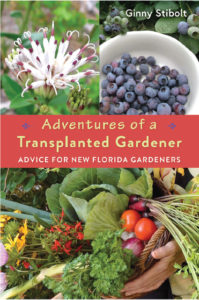If you’re new to Florida gardening, welcome to the jungle. And boy, will you need to change your mind about—and techniques for—plant care and gardening.

Illustration by Jordan Shapot
Being a native Floridian gave me the woefully mistaken idea that gardening here was easy. Almost anything and everything grew in the subtropical climate of St. Petersburg. Sure, there was sandy soil to amend, but with lots of sunshine, natural rainwater and Gulf Coast breezes, a garden vegetable patch or flowers was a pretty easy hobby.
And then I moved to another state. And I had to really learn how to garden and deal with actual soil issues and weather and varmints, and the worst of all—snow. Ugh. I’m back in Florida, and I now realize you do have to make some effort, even here. If you’re a new gardener or one who just moved to the Ocala area, here are some tips that might help.
Wait—if you can stand it. Of course, you’re going to put something in the ground, and soon, but try to at least wait through two seasons before you jump in with both feet. Get a feel for sun patterns, rainwater flow, shadows, pests and varmints in your area, and try to envision what could be. How long does the mild morning sun last in the fall? How much does the southwest sun blaze in midsummer? When there’s a gully washer rainstorm, where does the water flow? Now is the time to research your property.
Start small. Start with a small bed in a good location. Work the soil and put in a manageable amount of plants. If you jump into a three-acre plot that goes bad you may feel too discouraged to continue. I initially worked a 4-by-12-foot bed and tried tomatoes, peppers, squash and a couple herbs. That was enough. I could amend the plot by myself, could manage the install and upkeep myself and gardening continued to be a relaxing hobby. The next spring, I expanded and added potatoes, sweet potatoes and new varieties of tomatoes. It was more work, but I learned not to let zinnias get in with veggies, to keep tomatoes from touching and that voles would sample potatoes.
Find local advice. Whether from a nearby garden shop or a gardening group, folks who garden here will know things. Find them and find out what they know! Most people love to give advice, so talk to folks and tell them you’re new to the area. What varieties of plants can they recommend? Which methods have worked for them? Go to garden club meetings; pick people’s brains. Nicely. If it’s the time of year that garden events/expos are going on, attend a couple. Most everyone will have a perspective on the area’s weather, good garden stores, sources for compost and manure, and other helpful info.
 Buy local. When it is time to get your seeds or plants, a local shop will be more likely to buy their stock from a local or regional wholesaler. The big box stores will have more merchandise, and earlier in the season, but it’s likely the plants were greenhouse grown, not hardened off, and got scant care on the display shelf. A local grower is more likely to have varieties that do well here. For special varieties you may want—or have—to use mail order. Even then, keep in mind regional varieties. Why buy seeds or plants from Oregon or Washington? Buy them from a Georgia nursery instead.
Buy local. When it is time to get your seeds or plants, a local shop will be more likely to buy their stock from a local or regional wholesaler. The big box stores will have more merchandise, and earlier in the season, but it’s likely the plants were greenhouse grown, not hardened off, and got scant care on the display shelf. A local grower is more likely to have varieties that do well here. For special varieties you may want—or have—to use mail order. Even then, keep in mind regional varieties. Why buy seeds or plants from Oregon or Washington? Buy them from a Georgia nursery instead.
Other quick tips: If you don’t have one of your own (chickens, rabbits, goats, etc.), find a manure source, introduce yourself and grab some poop. Also, consider trench or lasagna composting just to get things started. This will allow you to do “something’’ for your garden and will get you outside and observing your yard. Almost any soil amendment will help your plants later on.
You can be a transplant and garden here. You’ll have a learning curve and some challenges, but it will still be fun. OS
Belea’s Book Review
 Adventures of a Transplanted Gardener: Advice for New Florida Gardeners, by Ginny Stibolt
Adventures of a Transplanted Gardener: Advice for New Florida Gardeners, by Ginny Stibolt
Stibolt entertains and informs reader with stories about her misadventures in Florida gardening. (Like, no, you can’t grow tulips here without putting the bulbs through a false winter in a refrigerator. Or that digging out and moving a 15-foot tree is a bad idea. Better to install the right plants to go around it instead.)
Florida is a challenge for gardeners; it’s not just one big jungle here. There are several distinct ecosystems on the peninsula and Stibolt recommends you work with the one you’re in. Many parts of Marion County are sandhill and pine savannah or Florida scrub. Knowing the ecosystem you’re in and what grows there naturally, Stibolt advises, will help you choose appropriate plants for your own landscape.
She offers advice on pollinator gardens, growing food crops and rainwater management, and is distinctly anti-lawn. This book will help any gardener in Florida, not just transplants. I highly recommended it.
A native Floridian and lifelong gardener, Belea spends her time off fostering cats and collecting caladiums. You can send gardening questions or column suggestions to her at belea@magnoliamediaco.com






